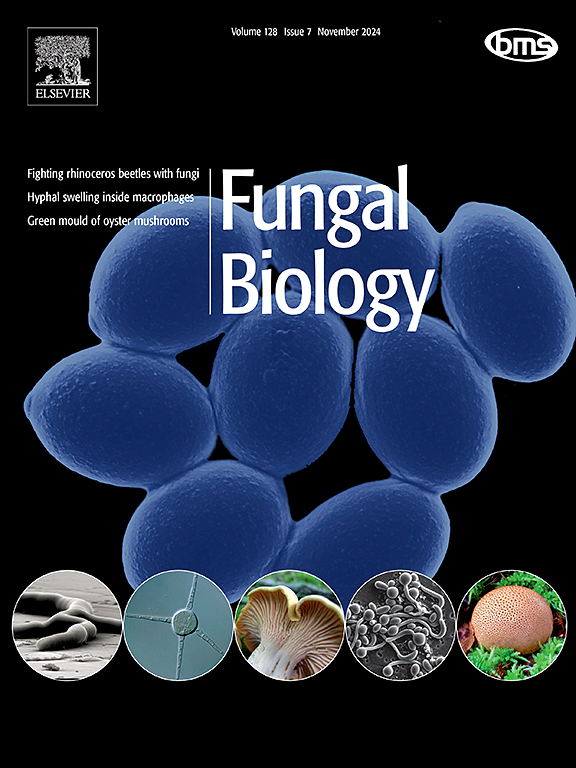Diversity of Translucidithyrium (Mycosphaerellales, Phaeothecoidiellaceae) in China: Insights into their evolutionary split time and cophylogeny
IF 3
3区 生物学
Q2 MYCOLOGY
引用次数: 0
Abstract
The species evolution of epiphytic fungi are unique and critically important due to their association with plants. In this study, six new species of Translucidithyrium were discovered re-integrated morphological characteristics of this genus combined with phylogenetic analyses. The phylogenetic analysis revealed that all species of Translucidithyrium formed a monophyletic clade within Phaeothecoidiellaceae. The molecular clock analysis indicated that the divergence time of extant species of Translucidithyrium occurred during the Cenozoic era (18 Mya). The cophylogeny was conducted based on separately phylogenetic trees of Translucidithyrium and its host plants to explore their evolutionary relationships. Translucidithyrium's species with host plant selection likely being random. Understanding the evolutionary history of Translucidithyrium species provides new perspectives and data to support research into the evolution of epiphytic fungi.
中国透光菌属(Mycosphaerellales, phaeotheecoidiellaceae)的多样性及其进化分裂时间和共生系的研究
附生真菌的物种进化是独特的和至关重要的,因为它们与植物的关系。本研究发现了6个新种,重新整合了该属的形态特征并结合系统发育分析。系统发育分析表明,所有的透光菌属属都是辉石菌科的一个单系分支。分子钟分析表明,现存Translucidithyrium的分化时间发生在新生代(18mya)。通过分别构建透光菌及其寄主植物的系统发育树,探讨二者的进化关系。带寄主植物选择可能是随机的。了解Translucidithyrium物种的进化史为研究附生真菌的进化提供了新的视角和数据。
本文章由计算机程序翻译,如有差异,请以英文原文为准。
求助全文
约1分钟内获得全文
求助全文
来源期刊

Fungal biology
MYCOLOGY-
CiteScore
5.80
自引率
4.00%
发文量
80
审稿时长
49 days
期刊介绍:
Fungal Biology publishes original contributions in all fields of basic and applied research involving fungi and fungus-like organisms (including oomycetes and slime moulds). Areas of investigation include biodeterioration, biotechnology, cell and developmental biology, ecology, evolution, genetics, geomycology, medical mycology, mutualistic interactions (including lichens and mycorrhizas), physiology, plant pathology, secondary metabolites, and taxonomy and systematics. Submissions on experimental methods are also welcomed. Priority is given to contributions likely to be of interest to a wide international audience.
 求助内容:
求助内容: 应助结果提醒方式:
应助结果提醒方式:


